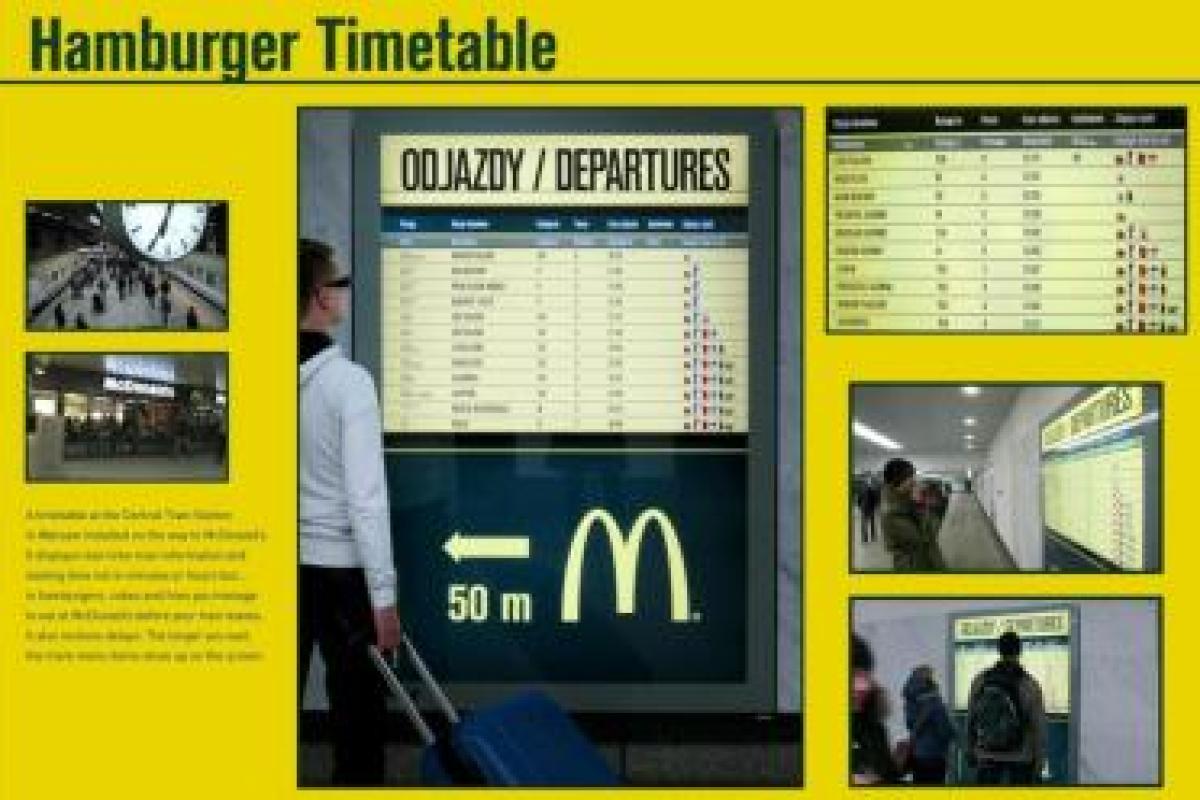The main railway station in Warsaw is just like any station.
People are standing around, waiting to board a train, or meet friends.
And, just like any station, trains are often delayed.
So people are bored, wondering what to do to pass the time.
Next to the railway station is a McDonalds.
But it never occurs to most people to go there.
Because it involves leaving the station, and they don’t want to take the chance of missing the train.
So McDonalds paid to sponsor the electronic timetable display.
The large board with the arrival and departure times of all the trains.
In most train stations, people stand around looking at these boards, waiting for them to change.
Simply because they don’t have anything else to do.
But now they do in Warsaw.
Because the McDonalds sponsored board doesn’t just tell you how much time you’ve got left in abstract units of time.
It tells you in food.
Right next to the ‘destination’ column, the ‘platform’ column, and the ‘time’ column, there’s a ‘just enough time for’ column.
So, if it’s ten minutes until your train, they show a symbol of a Coke in the ‘just enough time for’ column.
Fifteen minutes would show you’ve got time for a coke and French-fries.
Twenty minutes would show you’ve got enough time for a Big Mac.
And, as the time gets shorter, the display of food options shrinks.
So fifteen minutes shows just enough time for an ice cream.
And ten minutes shows just enough time for a coffee.
The display shows what you could actually be enjoying that’s more pleasant than just standing there.
This is a brilliant understanding of the way the consumer’s mind works.
It changes the framing of McDonalds.
It gives you permission to consider an option that would otherwise be seen as a distraction.
It combines marketing in two distinct categories.
The rational sell of a distress purchase.
Plus the appetite-anticipation-reward of FMCGs.
And all to a captive audience.
In the first month the board was up and running, McDonalds had around 5,000 extra customers.
Just by telling people something they weren’t thinking about.
In a situation where they wouldn’t normally have considered it.
By presenting them an option they didn’t know they had, expressed as units of waiting time.
You don’t have to be restricted to the category you’re in.
Get upstream and change the context.
Instead of trying to always sell McDonalds within its category as preferable to other foods.
Change the competitive set.
Sell McDonalds as preferable to waiting around bored, doing nothing.
Suddenly it’s a much easier sell to an appreciative audience.
That’s choice architecture.
That’s predatory thinking.
How predators make time to eat
How predators make time to eat
